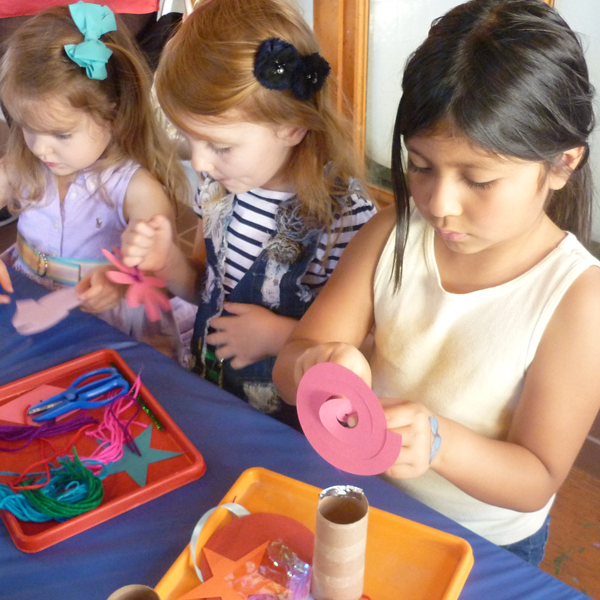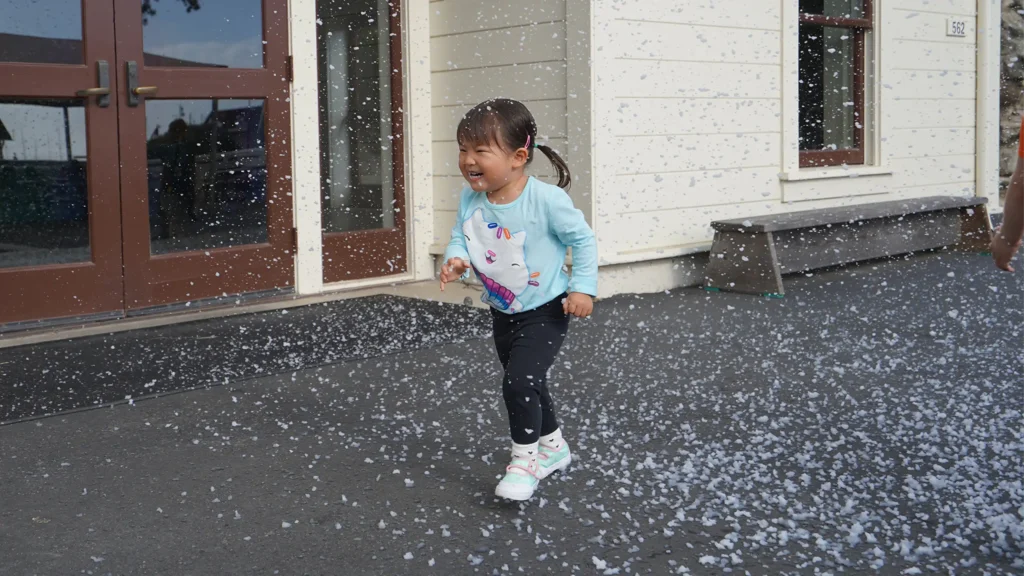
Children use familiar materials in a new way to design a collaborative, large scale mobile. They’ll explore concepts of balance and symmetry as they build their creation.
Materials Required
- Hula hoop
- String/fishing wire
- Metal sheets, plastic sheets, wood scraps, foil, other scrap materials
- Pre-cut shapes of cardstock (optional)
- Wire and wire cutters (optional)
- Scissors
- Hole punchers
Instructions
- Find pictures of artist Alexander Calder’s famous mobiles, and share them as inspiration.
- To start the activity, hang the hula hoop from the ceiling using string or fishing wire. Be sure to hang it low enough that it will be within reach.
- Design and cut shapes from your selected materials.
- Work as a group to attach the shapes to the hula hoop using string, fishing wire, and/or wire.
Additional Tips
Try these add-on activities:
- Challenge older children to create a non-symmetrical design with objects of different sizes and shapes on each side of the mobile. Can they find a way to place objects so that the mobile remains balanced?
- Invite younger children to notice how the weight of the object they add affects the movement of the mobile.
- Help children isolate different variables: what is it about an object that affects the way the sculpture balances? Is it color? Shape? Weight? Try removing variables by, for example, using only one color, or one shape, in a variety of materials.
- Try creating a large-scale sculpture from the ground up. Use the same materials from the mobile, but stack them on top of a base of foam or cardboard.
- To encourage collaboration, turn this into a game where each child gets their turn to add a shape of their choosing.
Links to Research
When building a mobile, anyone could use a hand keeping things in balance. In this creative activity, children will collaborate when making decisions about what pieces will create balance and how to coordinate placing those pieces (for more on collaborative creativity, see Sawyer & DeZutter, 2009). As children place pieces based on weight and balance, they engage in a problem solving process that developmental psychologists have labeled Control for Variables (Chen & Klahr, 1999). Determining which variables are most relevant is a key part of creating and testing hypotheses.
Supporting research includes:
Chen, Z., & Klahr, D. (1999). All other things being equal: Acquisition and transfer of the control of variables strategy. Child Development, 70(5), 1098-1120.
Sawyer, R. K., & DeZutter, S. (2009). Distributed creativity: How collective creations emerge from collaboration. Psychology of Aesthetics, Creativity, and the Arts, 3(2), 81-92.






